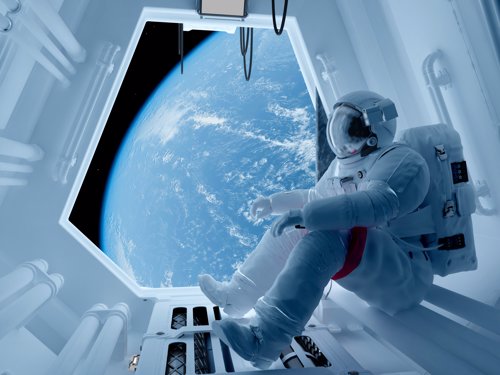
News
The gut microbiota of an astronaut
Since 1961, hundreds of humans have been sent into space as part of scientific missions. The known impacts of space environment on human physiology and health have been reported in previous studies. For example, spaceflight-induced muscle2 and bone density loss3. However, the data available are restricted to missions lasting six months at most and/or the study design lacked an appropriate control. Commercial trips into space have already been proposed for the 2020s and 2030s, and future missions may potentially be as long as three years. This means that now more than ever, there is a pressing need to assess the impacts of long-duration (>300 days) spaceflight on the human body.
Over a period of 25 months, one identical twin (TW) astronaut was assessed across ten biomedical modalities before, during and after a year-long spaceflight (340 days). His genetically identical twin (HR) served as a ground control for the duration of the study. The twins were 50 years-old at the time of the study and prior to the mission they have accumulated different amounts of exposure to the space environment over the course of their lifetimes.

Stool, urine and whole blood samples were collected from the subjects at different time points throughout the study. These samples were used to determine biochemical, cognitive, epigenomic, gene expression, immune, metabolomic, microbiome, proteomic, physiology and telomeric data. Within this article, particular focus is given to the microbiome changes.
DNA was extracted from both subjects’ faecal samples. Using shotgun metagenome sequencing techniques, the gut microbial composition of the subjects were examined throughout the study period. HR had a consistently higher microbial richness than TW throughout the study (P<0.05), but there was no significant difference in the Shannon Index (SI; index of diversity) (P=0.82) between the subjects. Diversity is often used as an indication of microbiome health and for TW, there was no significant decrease in richness or SI as a result of the spaceflight.
TW showed a significantly higher ratio of Firmicutes to Bacteroidetes (F/B ratio) during the flight, but this eventually returned to pre-flight levels within weeks after his return to Earth – suggesting the gut microbiota’s ability to ‘restore’ itself. HR showed a higher F/B ratio during pre-flight sampling but this effect was not sustained overtime.
When they examined beta-diversity, a significant difference was observed between the subjects and this effect remained distinct over a period of time. The microbial composition observed in a set of TW inflight samples was significantly different to the pre- and post-flight levels (P=0.001). This fluctuation was not found for HR (P=0.579).
To examine the extent of microbial shift, the authors identified microbial taxa and gene functions that were altered during the flight period. For TW, there was a 0.5 – 4.5% difference in taxa present in inflight samples compared to the pre- and postflight periods combined. A smaller percentage of altered microbial taxa was observed for HR during the parallel spaceflight period.
Lastly, metabolic data was examined using liquid- and gas- chromatography-mass spectrometry. Certain metabolites, such as 3-indole propionic acid, possess anti-inflammatory properties, and their presence was lower in TW throughout the whole study –suggesting altered microbial metabolism.
Overall, changes in microbial composition and function were more evident for TW during the spaceflight. It is unclear whether or not these inflight changes have any implication on health risks. Although if they do, the effects are expected to be minimal. Other biological functions that were examined, such as primary immune response, were not significantly affected by the space environment. The majority of other measures that were affected, such as telomere length and body weight, eventually returned to pre-flight states after return to Earth.
As only one subject was present in the spaceflight environment, the authors have emphasised that it is impossible to attribute causality to the spaceflight environment as opposed to a coincidental event. Therefore, this study should be considered as hypothesis-generating and must be verified by future studies of additional subjects. If confirmed, these findings may aid in the development of countermeasures against health risks associated with long-duration spaceflight.
References
1Garrett-Bakelman et al. (2019) The NASA Twins Study: A multidimensional analysis of a year-long human spaceflight. Science. 364, 1-20.
2Akima et al. (2000) Effect of short-duration spaceflight on thigh and leg muscle volume. Med. Sci. Sports Exerc. 32, 1743-1747
3Smith et al. (2012) Benefits for bone from resistance exercise and nutrition in long-duration spaceflight: Evidence from biochemistry and densitometry. J. Bone Miner. Res. 27, 1896-1906
28/10/2019